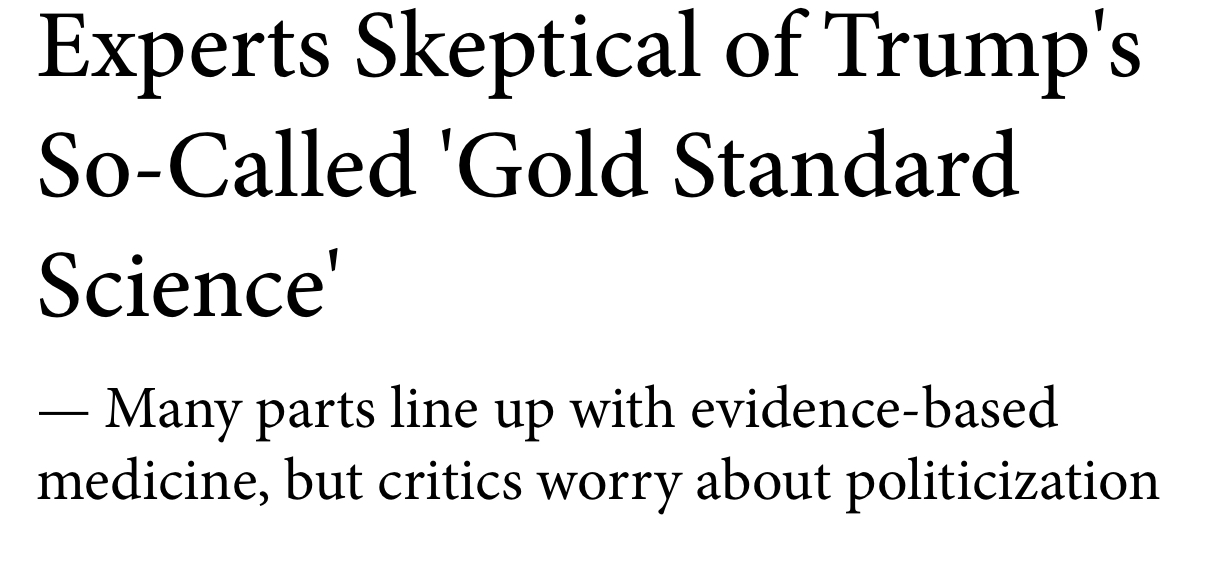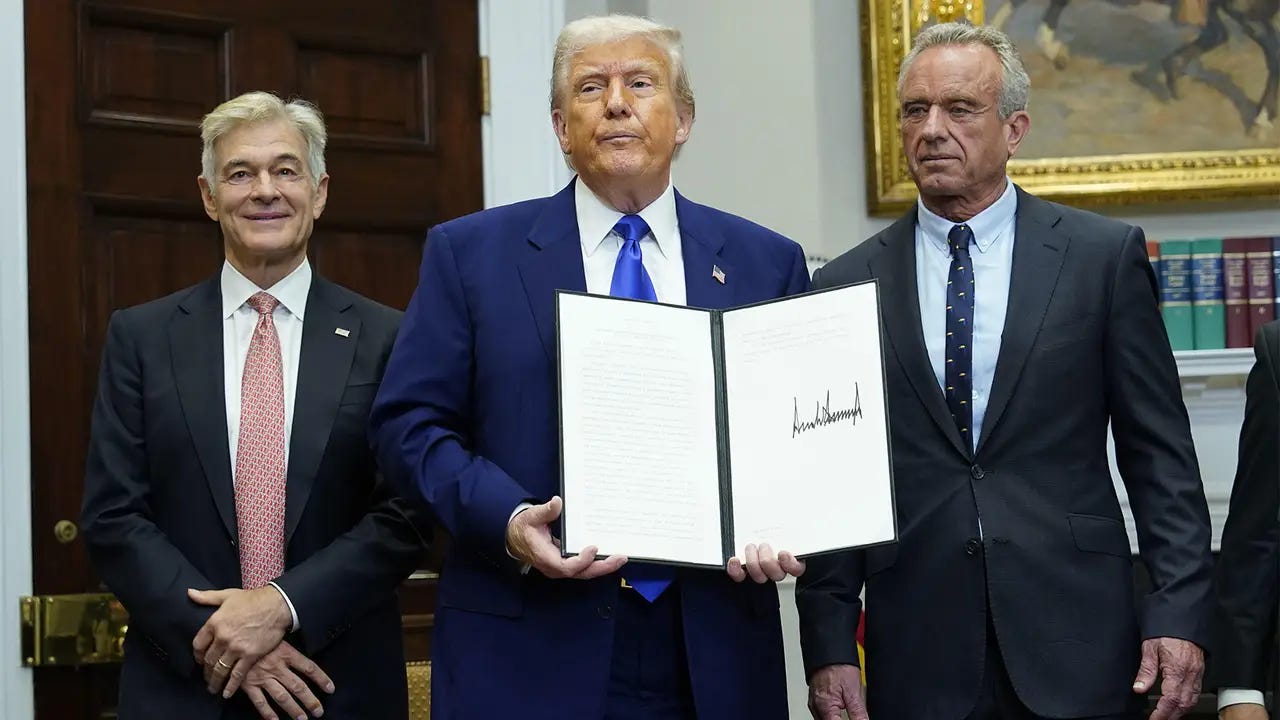On May 23, President Trump signed an executive order, as seen below. You may have missed this one among the 160+ executive orders that have been issued in a little more than five months.
What, you might ask, does “Gold Standard Science” mean? Yesterday, MedPageToday published a story under the following headline. (I was one of the people interviewed for this story.)
https://www.medpagetoday.com/special-reports/features/116310
The story explains:
Characteristics of gold standard science listed in the order include being reproducible, transparent, communicative of error and uncertainty, accepting of negative results, and without conflicts of interest, among others.
You can read the executive order in its entirety here.
What the story didn’t mention were other characteristics of “gold standard science” as the President’s order calls for. These include:
skeptical of its findings & assumptions;
structured for falsifiability of hypotheses;
Subject to unbiased peer review.
I don’t feel as if I’m going out on a limb here when I say that I don’t think any of those characteristics of “gold standard science” match what we’ve seen from federal health agencies since January.
The non-evidence-based wellness promotions made by RFK, Jr., Dr. Oz, and both of Trump’s surgeon general nominees? Federal health officials or nominees with conflicts of interest galore?
Kennedy lying to a member of Congress about leaving the Advisory Committee on Immunization Practices alone…and then firing all 17 ACIP members and replacing them with vaccine skeptics? Is that unbiased peer review? Is this transparent?
Kennedy promoting vitamin A, cod liver oil, chicken soup, antibiotics and steroids for measles outbreaks? Is that reproducible, communicative of uncertainty, skeptical of its findings & assumptions, structured for falsifiability of hypotheses, subject to unbiased peer review?
Issuing the MAHA report that included many errors, cited fabricated or misrepresented or nonexistent studies, some of which appeared to be AI-generated citations that were apparently not fact-checked. The HHS document made claims that were refuted by papers it cited to back them up. One health expert called it “willful medical disinformation.” Another said, “It is so far out of left field that I find it insulting.” Is this gold standard science? Does this restore confidence in science? Was that “communicative of error” or just blaming it on formatting issues?
Structured for falsifiability of hypotheses? Oh, you mean like ivermectin, injecting bleach or shining ultraviolet light inside the body to treat COVID, wind turbines causing mental illness, toxic chemtrails, Lyme disease as a bioweapon, raw milk healthier than pasteurized, poisonous seed oils? All claims promoted by officials in this Administration?
Where are the citations to back up many of the claims in the executive order?
In Science last week there were several opinion pieces weighing potential merits and flaws of the executive order. You can see links to three op-eds on this page .
In my opinion, the order is shallow in its veracity. It is hypocritical, inauthentic, gobbledygook. Parts of it are ludicrous; it includes a waiver clause at the end that allows any agency head to claim ‘ Oh, but this doesn’t apply to me in this case.” And it is a document that criticizes others for politicizing science when it brings politicizing of science to an unprecedented level. And in that regard it is ominous and very concerning.








Why has science and the role of scientist been so eroded that charlatans prosper? Looking back on the origins it is perhaps reasonable to look at the COVID epidemic as a turning point in what is a longstanding erosion of trust. The false report of a link between thimerosal containing vaccines and autism published in the Lancet by Wakefield may be considered a the modern renewal of mistrust in science. Despite multiple research dispelling the assumption, Kennedy and his cohorts still believe the linkage exists. But this phenomenon is perhaps not unique to the present era. Looking back on the 1918-19 influenza pandemic, a similar picture of mistrust is evident. The erosion of trust was the result of medicines inability to correctly identify the source of the epidemic and secondly its inability to effectively deal with it. In the long run, that trust was reinstated. COVID may have been the turning point this time around with mistrust of a very effective vaccine in reducing death and hospitalizations. We can take comfort that the present level of animosity toward expertise is temporary. Or perhaps it is just hope on my part